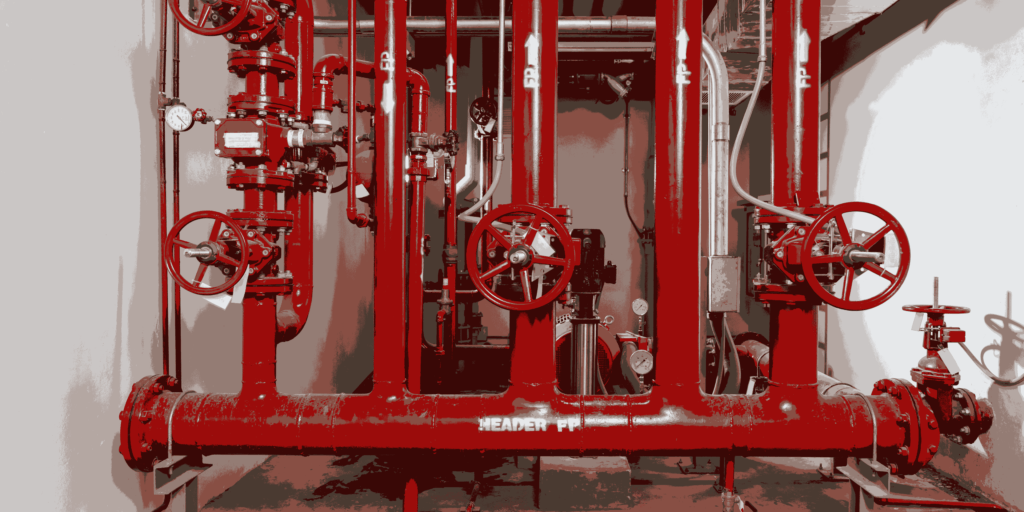Fire safety is a crucial aspect of any building, be it residential, commercial, or industrial. Among the various fire safety measures available, the fire hydrant system stands out as one of the most effective and widely used. This blog will delve into what a fire hydrant system is, its components, how it works, and its importance in ensuring safety during fire emergencies.
Understanding Fire Hydrant Systems
A fire hydrant system is a network of pipes and hydrants designed to provide a reliable and sufficient water supply to combat fires. It is a vital part of the fire protection system of any building and is mandated by law in many regions. The primary function of a fire hydrant system is to control and extinguish fires, thereby minimizing damage to property and loss of life.
Components of a Fire Hydrant System
A typical fire hydrant system consists of several key components:
- Water Supply: This is the source of water for the hydrant system. It can be a municipal water supply, a dedicated water tank, or a natural water source like a pond or river.
- Piping System: This network of pipes distributes water from the supply source to various hydrants strategically placed around the property.
- Hydrants: These are the access points where firefighters can connect their hoses to draw water. They come in various types, including pillar hydrants and underground hydrants.
- Pumps: Pumps are used to maintain adequate pressure in the system to ensure a steady and strong flow of water to the hydrants.
- Valves: Valves control the flow of water within the system, allowing for sections to be isolated during maintenance or emergencies.
- Hoses and Nozzles: Firefighters use hoses and nozzles to direct the water onto the fire effectively.
How Does a Fire Hydrant System Work?
When a fire breaks out, the first step is to activate the fire hydrant system. This can be done manually or automatically, depending on the system’s design. Here’s a step-by-step overview of how the system operates:
- Detection: The fire is detected, and an alarm is raised either manually or through an automated fire alarm system.
- Activation: Firefighters or trained personnel activate the hydrant system by opening a valve or using a key to access the hydrant.
- Water Flow: Water from the supply source is channeled through the piping system to the nearest hydrant.
- Connecting Hoses: Firefighters connect hoses to the hydrant and extend them to the fire location.
- Firefighting: Water is then directed through the hoses and nozzles onto the fire, helping to control and extinguish it.
Importance of Fire Hydrant Systems
Fire hydrant systems play a pivotal role in fire safety for several reasons:
- Immediate Response: They provide an immediate source of water, which is crucial in the early stages of a fire when rapid intervention can prevent the fire from spreading.
- Accessibility: Hydrants are strategically placed to ensure easy access for firefighters, enabling them to combat the fire more efficiently.
- Reliability: A well-maintained fire hydrant system is highly reliable, ensuring a steady supply of water during emergencies.
- Compliance: Many building codes and regulations mandate the installation of fire hydrant systems, making them essential for legal compliance.
Types of Fire Hydrant Systems
Fire hydrant systems can be classified into several types based on their design and application:
- Wet Riser System: This system is kept constantly charged with water, ensuring immediate availability during a fire. It is commonly used in high-rise buildings.
- Dry Riser System: In this system, the pipes are empty and are filled with water only when needed. It is suitable for buildings where the risk of freezing exists.
- External Hydrant System: These hydrants are located outside buildings and are used to supply water to external fire hoses.
- Internal Hydrant System: These are installed within buildings, providing a ready water supply to fight fires indoors.
Maintenance of Fire Hydrant Systems
Regular maintenance is essential to ensure the fire hydrant system remains operational and effective. Maintenance activities include:
- Inspection: Regular inspections to check for leaks, damage, or blockages in the system.
- Testing: Periodic testing to ensure that pumps, valves, and hydrants are functioning correctly.
- Cleaning: Keeping the hydrants and hoses clean to prevent blockages and ensure smooth operation.
- Repairs: Promptly repairing any damaged components is essential to maintain the integrity of the system
Conclusion
A fire hydrant system is a critical component of any building’s fire safety measures. Its ability to provide a reliable and immediate water supply makes it indispensable in combating fires and minimizing damage. Understanding how these systems work, their components, and the importance of regular maintenance can help ensure that they are ready to perform when needed. For anyone concerned about fire safety, investing in a well-designed and properly maintained fire hydrant system is a step in the right direction.
For more detailed information and expert advice on fire hydrant systems, you can visit Pace Safety’s Fire Hydrant System page. Their comprehensive resources and professional guidance can help you enhance your fire safety measures effectively.

